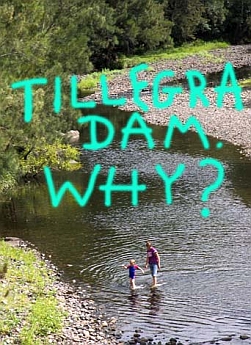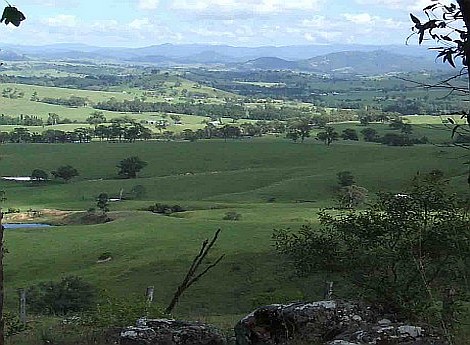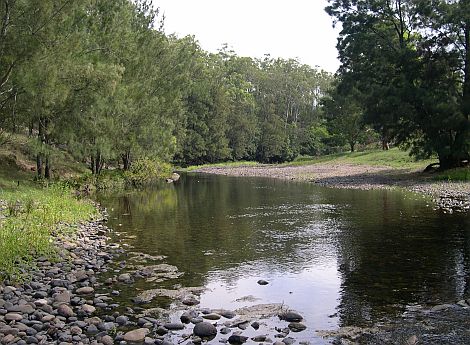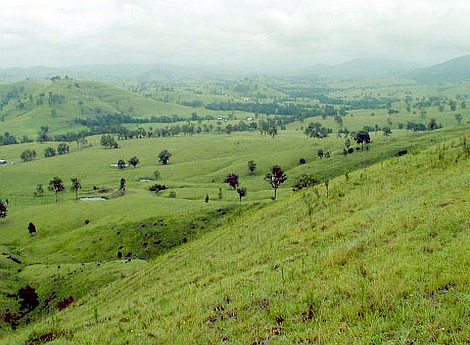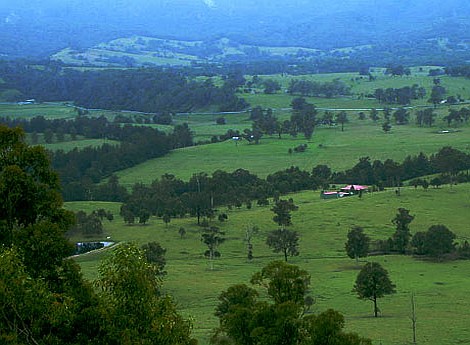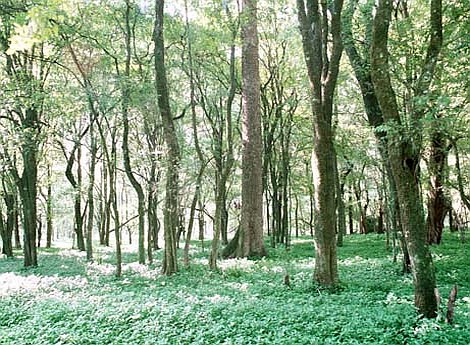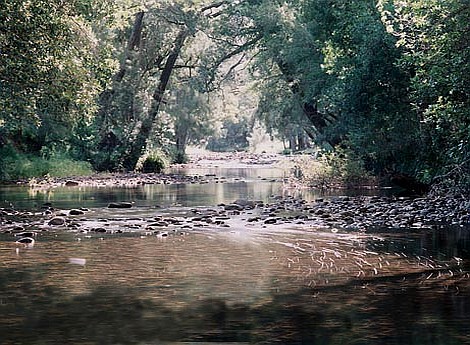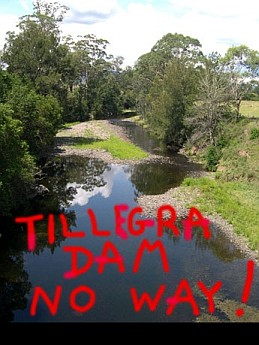A matter of politics
The following is a cover story written by Greg Ray and published in the Newcastle Herald 3 January 2009.
“It’s very difficult to imagine that we’d need it before the second half of next century . . . . if we need it at all. The era of very large dams, I think, is just about gone.” Hunter Water managing director David Evans, May 1998.
“Rather than build new dams we are making better use of our existing ones. Our long-term modelling tells us that we can be affected by extreme droughts and that the Hunter’s population is expected to grow by 125,000 people over the next 25 years. A balanced plan is in place to meet these needs.” Hunter Water managing director Kevin Young, February 2006.
FOR the previous 20 years, the long-mothballed 1950s plan to build the Tillegra dam near Dungog had been firmly on the backburner.
Time and time again Hunter Water declared the dam wasn’t needed and that it might never be.
Even during the recent creation of the Lower Hunter Regional Plan, the grand document outlining how the Hunter could accommodate 160,000 new residents over the next few decades, Hunter Water continued to state that it could meet all foreseeable future needs from existing resources. Proposed
capital investments and efficiency initiatives did not include Tillegra.
That seemed reasonable, since the Hunter appeared to be oversupplied with water. Even when surrounding regions were racked by drought, the Hunter luxuriated in its brimming supplies.
But suddenly, in November 2006 with the Hunter’s water reserves still very high Premier Morris Iemma made a shock announcement that the dam would be built.
Immediately, and ever since, the great question has been, what changed?
How, over just a few months, did a dam that might never be needed become a pressing necessity?
Hunter Water insists the dam suddenly became necessary because changing national water guidelines meant that even a slight risk of running short of water became unacceptable. Goalposts shifted in the light of climate change and national water shortages. Sustainable water yield estimates were revised
downward and expectations of a drier future with greater evaporation rates were factored into equations.
Almost everybody else who has examined the strangely timed and unexpected announcement believes that, although these points may have some validity, the major reasons lie elsewhere.
At the time of the announcement, the Central Coast was in the grip of a horrendous drought. The Coast’s poorly constructed water supply system consisting of a big dam at Mangrove with hardly any catchment and a small one at Mardi with more than enough was on its knees because years before
in unusually wet times, when a pipeline should have been built between the two, somebody had apparently decided to save money by not building it.
As the drought progressed the Coast’s storages fell to as low as 13 per cent and severe water restrictions were imposed. Desalination plants were seriously being considered.
The fear of running out of water was very real and the restrictions were painful. It is reasonable to speculate that the Labor Government may have considered a potential political backlash in the Coast’s marginal seats at the election, due in March 2007. Being seen to do something decisive about the water problem on the Coast could only have been good politics for Labor.
As it happens, the state’s water authorities had not been ignoring the Coast’s dire problem. Hunter Water, which incidentally had often lobbied to take over the job of supplying the Coast’s water, had been able to throw the Coast a vital lifeline, thanks to a major pipeline upgrade that joined the
Hunter to the Coast, forming a rudimentary regional water grid.
The Hunter, more than adequately supplied with water thanks to the reliable catchment of the Barrington Tops, kept the Coast from drying up during the critical months until the drought broke.
In May 2006 The Herald reported that Hunter Water was building a $5 million water treatment plant on the Williams River many years ahead of schedule. The plant let Hunter Water harvest more water from the river for the express purpose of maximising the amount it could export to the Coast.
Hunter Water managing director Kevin Young said the plant wouldn’t have been needed until 2016, but the crisis on the Coast plus an offer by the Coast councils to pay half the cost changed the equation. It made good business sense for Hunter Water too, since the authority was making good money by
selling 20 million litres of water a day to the Coast through its newly upgraded pipeline. Trouble was, the amount it could export was limited by a clause that would have stopped the flow south if the Hunter’s own reserves fell below 60 per cent.
The search was on for ways to keep the water flowing south by maintaining Hunter reserves as high as possible.
It was in this context that Tillegra Dam made its surprise appearance.
ANNOUNCING Tillegra Dam in November 2006 just three months out from the election Premier Iemma said the “$342 million, 450 billion-litre dam and water grid” would “help drought-proof the Hunter and Central Coast region for the next 60 years”.
“The Premier said the new direction for water delivered this [water security] in full for the Central Coast. The water plan includes short, medium and long-term measures involving fast-tracking the new Tillegra dam, a massive industrial recycling scheme in Newcastle and a new water grid to boost supplies to the
Central Coast,” the press release continued.
The dam, the new pumps on the Williams River and a boost to the capacity of the pipeline between Newcastle and the Central Coast from 27 to 35 million litres a day (about half of the Central Coast’s current daily use) would “not only secure supply for Hunter families, but will ensure that the crisis which
exists on the Central Coast will not happen again”.
“With the Central Coast’s dams standing at only 15 per cent full and no long-term recovery in sight, now is the time for bold and far-sighted action,” Iemma said.
“Water Utilities Minister David Campbell said the package would be funded by the proceeds from the sale of water from Hunter Water to the Central Coast water authority, future development contributions in the Hunter and Central Coast and the 2009-2013 IPART pricing determination. The cost is expected
to be no more than 40 cents per week for a typical household consumer in the Hunter,” the press release concluded.
The announcement was well-received on the Central Coast, especially since it was clear that Central Coast ratepayers would not be burdened with any of the cost of building the dam other than by buying water from the Hunter.
Water supply on the Central Coast is provided by Gosford and Wyong councils. This is a fortunate arrangement for the region’s ratepayers since profits from the water supply business are retained locally. This contrasts with the situation in the Hunter, where Hunter Water is obliged to pay tens of millions of dollars a year to the State Government.
But money for capital works had been arguably less easy to obtain for the Coast’s water supply authorities, which may be why the crucial Mardi to Mangrove pipeline wasn’t built years ago.
Faced with the drought crisis, in 2007 the Central Coast councils produced their WaterPlan 2050 a blueprint for drought-proofing Gosford and Wyong. Option number one in WaterPlan 2050 was “Regional Tillegra Dam”. The study noted, however, that Tillegra wouldn’t be built before 2013 and that it couldn’t be regarded as the whole answer.
In the meantime, relying on water piped from the Hunter carried the risk that continued importation of Hunter Water might put the Hunter Region’s water security at risk. Fortunately, a federal election was looming and the Central Coast’s marginal seats were able to unexpectedly use their swinging status to persuade the Government to promise an astonishing $80 million to build the Mardi to Mangrove pipeline, enabling water from the Wyong River to be diverted to keep the big Mangrove Creek Dam full.
That announcement, in May 2007, meant that one of the three sources of funds that then Water Minister David Campbell had promised would build Tillegra Dam water sales to the Central Coast had just evaporated.
THE Federal Government gift of $80 million to build the Mardi to Mangrove pipeline was an immense godsend to the Central Coast councils, but a political time-bomb for the State Government and for Hunter Water and its customers.
Just how much of a game-changer this piece of pork-barrelling really was became clear recently when Gosford Mayor Chris Holstein bluntly admitted that it knocked Tillegra Dam from top of the Central Coast’s wish-list to being practically redundant.
“We only wanted Tillegra because we didn’t think we’d get support for the pipeline, even though that was our preferred option,” Holstein said.
The pipeline will mean that the Central Coast won’t have to buy Hunter water. The pipeline will create an abundant reserve, virtually free. It has been estimated that the pipeline will cost about $110 million, meaning Central Coast ratepayers will have to pay about $30 million from their own resources.
The pipeline system also means the Central Coast will retain complete control over its water destiny, reducing the risk of Hunter Water gradually increasing its say.
Faced with the withdrawal of this source of promised funding, there were rumours that the new Premier, Nathan Rees, was lobbied to consider dropping Tillegra Dam.
The dam survived a major review of projects, however.
Hunter Water managing director Kevin Young has insisted that new national guidelines on acceptable risk mean Tillegra should proceed. Without the dam, sustainable water yields might soon be inadequate.
While climate change models suggested the Hunter would get more rainfall, not less, Young has said that predicted evaporation rates would rise, more than offsetting any advantage.
The State Government has been happy to let Hunter Water keep arguing in favour of Tillegra, despite the fact that many people notably the Greens John Kaye have been beginning to draw attention to an apparent paucity of planning documents relating to Tillegra in the months leading up to the shock
announcement.
Repeated requests for supporting documents have borne remarkably little fruit, fuelling the already strong allegations that the announcement had been chiefly a political salve to boost Morris Iemma’s stocks on the drought-stricken Central Coast.
But while Hunter Water was holding the fort, the State Government was preparing to undermine its position still further.
In its submission to the Independent Pricing and Regulatory Tribunal (IPART) on means of paying for Tillegra, Hunter Water had argued in line with the original announcement by Minister Campbell that developer levies would be a major source of funds.
Developers, however, were outraged. Even the Government’s own land development arm, Landcom, argued persuasively in its submission to IPART that the dam was not needed to support projected population growth.
Developers argued that the costs should be borne by water users in the Hunter and on the Central Coast, citing the Government’s own repeated references to Tillegra’s major role in drought-proofing the coast.
When it started its hearings IPART seemingly had the power to direct three potential sources of funds to Tillegra. These were the same three sources cited in the Government’s original announcement of the dam: Hunter Water customers, property developers and Central Coast Water users.
Last month (Dec 2008) the Government flatly eliminated two of those potential sources.
A major planning “reform” in favour of developers exempted the property industry from levies of various kinds previously payable to councils and water authorities.
With the stroke of a pen, developers were off the hook. They would not despite the Government’s undertaking in the original Tillegra announcement pay any of the cost of the dam.
That instantly meant that Hunter Water customers were faced with the prospect of picking up the tab for the $251 million that developers had been set to pay.
It might have seemed that IPART still had the power to rule that Central Coast water users be levied for Tillegra, since so much evidence existed that the dam was announced largely for their benefit.
But Water Minister Phil Costa quickly eliminated this prospect. Costa gladly confirmed to this newspaper that he had promised the Central Coast’s marginal seats via a verbal undertaking to Gosford’s mayor at a regional cabinet meeting that they would not be required to pay.
With this promise on the record, IPART has little room to move. The only funding source left standing apart from the outside chance of a direct capital grant from the Government or a long period of exemption for Hunter Water from paying dividends and other charges to State coffers is Hunter Water’s
customer base.
Hunter Water customers are already facing massive increases in their water bills over coming years. If its new charges are approved, Hunter Water’s average customer with a bill of $718 will pay $925 in 2009-10. The year after that they will pay $992 and in 2011-12 their bill will be $1057. By 2012-13 the average bill will be $1107.
That’s a cumulative extra cash hit, over four years, of about $1200.
Hunter Water has asserted that the proposed increases have almost nothing to do with Tillegra, which it said represents only a fraction of the additional hit.
How much more will have to be paid by Hunter Water customers now that both Central Coast water users and the property development industry have been excused from contributing to Tillegra remains to be seen.
Hunter Water which provided the struggling Labor Government a vital bargaining chip to win Central Coast votes before the 2007 election appears to have been left in the lurch.
It is caught between an unsympathetic Government with little interest in safe Hunter seats, and a restive customer base increasingly angry at the likely impact of the unpopular dam on their annual water bills for many years to come.
Water Utilities Minister David Campbell said the package would be funded by the proceeds from the sale of water from Hunter Water to the Central Coast water authority, future development contributions in the Hunter and Central Coast and the 2009-2013 IPART pricing determination.
